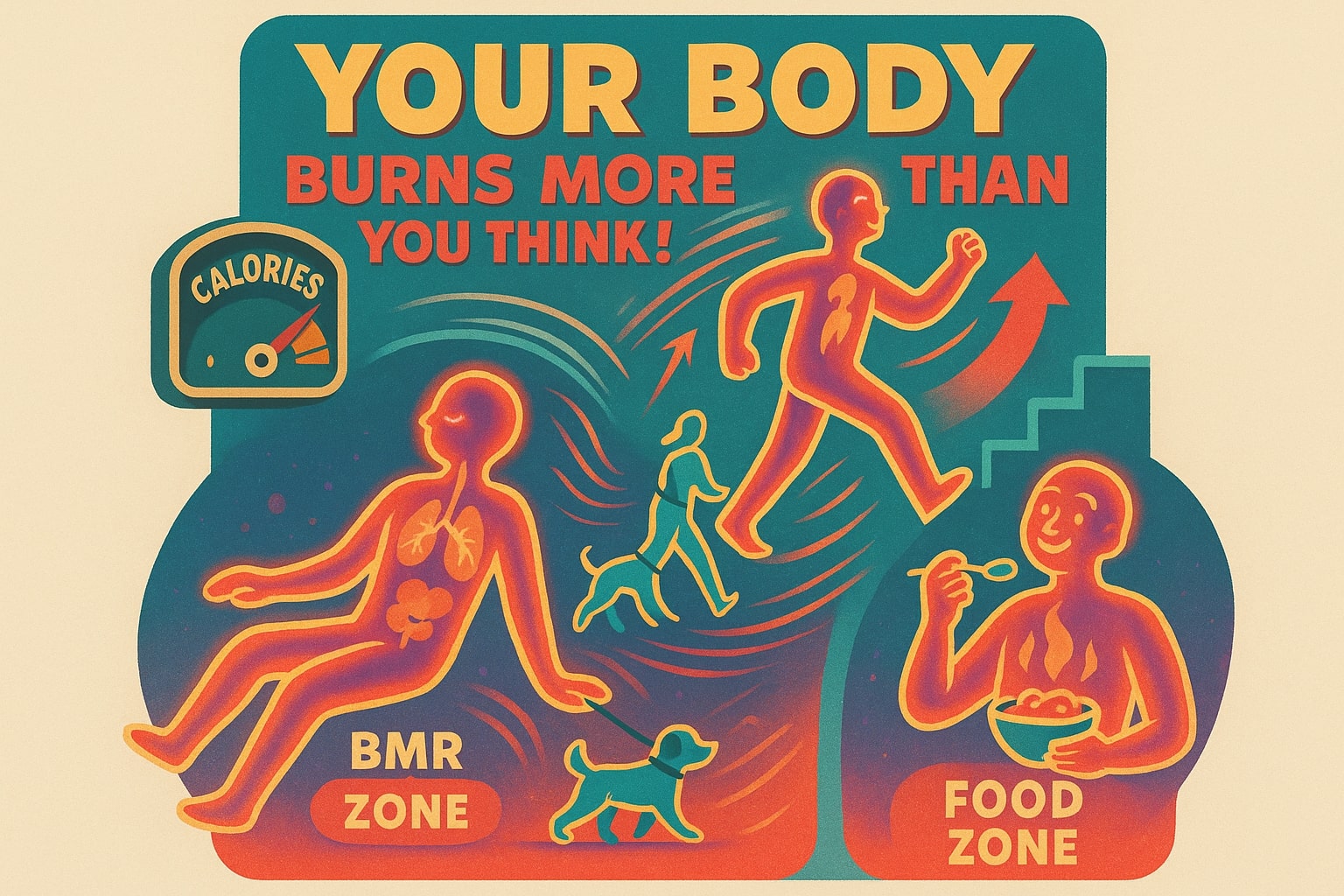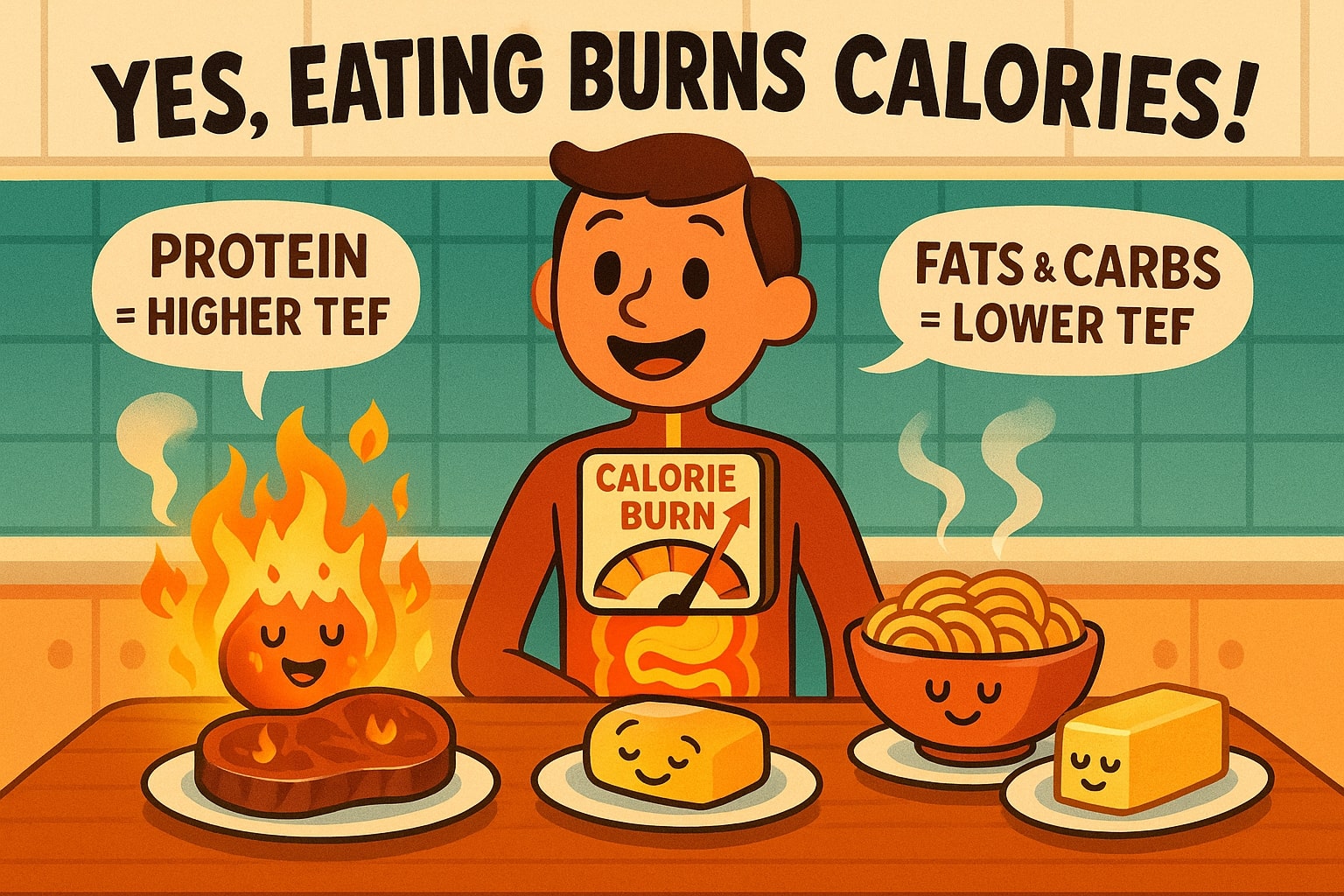Total Daily Energy Expenditure (TDEE) is a key concept for anyone trying to better understand their body’s daily energy needs—especially if you’re focused on weight goals, fitness routines, or nutrition plans. Simply put, TDEE is the total number of calories your body burns in a day. It takes into account more than just your workouts—it includes your Basal Metabolic Rate (BMR), your physical activity, and the Thermic Effect of Food (TEF), which is the energy used to digest and process what you eat.
If you're tracking calories, macros, or anything health-related, you’ll find everything in the Health Tools section—made for people who like clarity over confusion.
What Is TDEE (Total Daily Energy Expenditure)?

Components of TDEE
To get a full picture of your Total Daily Energy Expenditure (TDEE), it helps to understand the three key parts that make it up: Basal Metabolic Rate (BMR), physical activity, and the Thermic Effect of Food (TEF). Each one plays a unique role in how your body burns calories throughout the day.
Basal Metabolic Rate (BMR)
Your BMR is the number of calories your body needs just to keep you alive while you're resting. It powers all the behind-the-scenes functions that happen even when you’re lying on the couch doing nothing. These include:
BMR is usually the biggest chunk of your daily energy burn. It’s calculated using your age, gender, height, and weight, since these factors influence how much energy your body needs to function at rest. Think of it as the baseline fuel your body uses just to stay up and running.
Activity Level
How much you move throughout the day has a big impact on how many calories you burn. Whether you're mostly sitting at a desk or training for a marathon, your activity level helps determine your total energy needs.
Activity levels are usually divided into the following categories:
-
Sedentary – You get little to no exercise during the week.
-
Lightly Active – You might take walks or do light exercise 1–3 times per week.
-
Moderately Active – You work out or play sports around 3–5 days a week.
-
Very Active – You engage in hard exercise almost every day (6–7 times per week).
-
Extra Active – You do intense physical training or have a physically demanding job.
Each category uses a different multiplier when calculating your TDEE. For instance, someone who's moderately active will naturally burn more calories than someone who's mostly sedentary. The more you move, the more energy your body requires to keep up.
Thermic Effect of Food (TEF)
The Thermic Effect of Food (TEF) is the energy your body uses just to digest, absorb, and process the food you eat. Believe it or not, this process makes up about 10% of your total daily calorie burn.
Not all foods require the same amount of energy to process. For example, protein takes more effort to break down than carbs or fats—meaning your body actually burns more calories digesting protein-rich meals. On the other hand, fats and carbs have a lower thermic effect, so they require less energy to process.
This is one reason why high-protein diets are often recommended for people trying to manage weight or build muscle—they slightly boost your metabolism through TEF.

How Is TDEE Calculated?
To figure out your Total Daily Energy Expenditure (TDEE), the first step is to estimate your Basal Metabolic Rate (BMR)—that’s how many calories your body burns at rest to keep vital functions going. Once you know your BMR, you can multiply it by your physical activity level to get your TDEE. The Thermic Effect of Food (TEF) is also included automatically in most TDEE calculations, accounting for the energy your body uses to digest food.
The most popular and accurate method for calculating BMR is the Mifflin-St Jeor equation. Here’s how it works:
Once you’ve got your BMR, you just multiply it by a factor that reflects your daily activity level (like 1.2 for sedentary, or 1.55 for moderately active) to get your TDEE—the total number of calories you burn each day.
Harris-Benedict Equation
The Harris-Benedict equation is another popular method for estimating your BMR. It’s been used for decades, although it can sometimes overestimate how many calories you need. Here’s how the equation works:
For men:
BMR = 88.362 + (13.397 * weight in kg) + (4.799 * height in cm) - (5.677 * age in years)
For women:
BMR = 447.593 + (9.247 * weight in kg) + (3.098 * height in cm) - (4.330 * age in years)
Katch-McArdle Formula
If you know your lean body mass, the Katch-McArdle formula is a great option. It focuses on muscle mass rather than total weight, so it can be more accurate for people with higher fitness levels.
BMR = 370 + (21.6 * lean body mass in kg)
Once you’ve figured out your BMR using any of these formulas, you multiply it by an activity factor to estimate your TDEE. Here’s a quick guide to the common multipliers:
After calculating your TDEE, you can adjust your calorie intake based on your goals. Want to lose weight? Aim to eat fewer calories than your TDEE. Looking to bulk up? You’ll need to eat a bit more.
Since your TDEE is built on your BMR, it helps to start with the
BMR Calculator to find out how much energy your body burns at rest.



